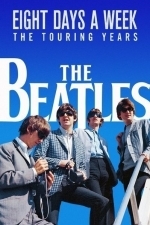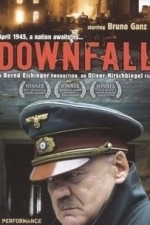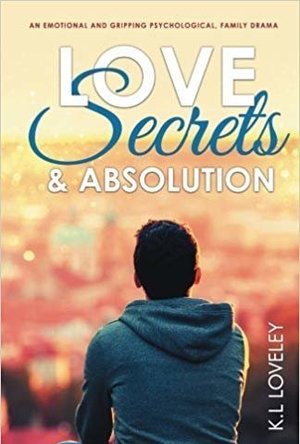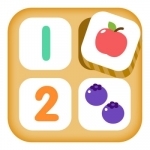
Todo Number Matrix: Brain teasers, logic puzzles, and mathematical reasoning for kids
Education and Games
App
4.5 stars! "Todo Number Matrix is a unique math app that does a great job targeting a wide audience...

NASCAR RACEVIEW MOBILE
Sports and Games
App
Free Features: - Live Race: Enjoy 5 free minutes of the fully interactive, 3d virtual video of the...
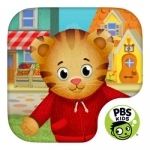
Explore Daniel Tiger's Neighborhood
Education and Entertainment
App
**2016 Parents' Choice - Gold Award** "The app is a charming and effective way to teach a wide...

Sweet Home Stories (Full)
Education and Games
App
Wake up and get ready! There are lots of things to do in Sweet Home Stories! A fun and safe...
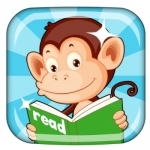
Monkey Junior: kids learn to read English, Spanish
Education
App
Monkey Junior is currently #1 popular learn to read program with millions of happy learners and...

Daily Shopping Stories (Full)
Education and Games
App
Welcome to Daily Shopping Stories, the most exciting, fun-filled animated shopping center ever! Buy...

Terraforming Mars
Tabletop Game
In the 2400s, mankind begins to terraform the planet Mars. Giant corporations, sponsored by the...
Boardgame TerraformThis MeeplesChoice
Bob Mann (459 KP) rated The Beatles: Eight Days A Week - The Touring Years (2016) in Movies
Sep 29, 2021
Ron Howard’s film focuses on “the touring years” which as depicted were truly manic, spanning from 1963 to 1966 before then skipping forward to 1969 for their final rooftop concert. This was in a time when airline travel was not the more comfortable and smoke-free environment it is today, so these worldwide trips much have been seriously grueling, even without the adoration that reached dangerous proportions when they reached their destinations.
Howard has clearly had his research team scour the world for archive clips since – whilst sensitively skipping some of the more ‘commonly seen’ materials, like the “jewelry shaking” clip – the film shows concert action I certainly had never seen before.
The film is also nicely interlaced with celebrity cameos recalling their linkage to the Fab Four’s performances (often moving, like Whoopi Goldberg’s) and the group’s “legacy” effect on modern-day art (in Richard Curtis’s case rather less convincing). One of the most striking of these is that of Sigourney Weaver recounting her attendance as a pre-teen at the Beatle’s Rose Bowl performance in LA. There, in the newsreel footage of adoring fans, is the unmistakable face of the ‘before she was famous’ actress: at least I hope it really was her (as the clip’s timing implied) and not a lookalike, since that would be really disappointing!
Also featuring – although not enough for my liking – are Paul McCartney and Ringo Starr, recounting their feelings about the events and what happened behind the closed doors of hotel rooms or – most notably – a meat truck.
What shines through is the honesty and intelligence of Lennon and McCartney, typified by the idiotic questioning of journalists, some of who had done so little homework they didn’t even know there wasn’t a Beatle called Eric! Some of the group’s off the cuff responses were priceless: “What is the secret of your success?” asks one journo. “We don’t know” quips John. “If we knew we’d form another group and be managers.”
While the film has enormous energy in its first two thirds, it rather runs out of momentum in its final reel…. a bit like the Beatles did in fact. It also has elements of gimmickry like the smoke rising from photo cigarettes which gets a tad tiresome after the tenth occurrence.
But this is a very watchable and enjoyable rock down memory lane for 50-somethings and for any fans old and young of the Fab Four’s music. Highly Recommended. Note that the documentary itself is about 90 minutes in length, with another 30 minutes of live concert music tagged onto the end post-titles (which for travel reasons I was unfortunately unable to stay for so can’t comment on).
RəX Regent (349 KP) rated Downfall (Der Untergang) (2004) in Movies
Feb 19, 2019
Told in a straight forward manner, we are given a portrait of not only Adolf Hitler himself, played perfectly by Bruno Ganz, who manages to humanize him without ever apologising for his heinous acts, but also those close to him. Shown through the young eyes of his final secretary, Traudl Junge (Alexandra Maria Lara), we are given a picture of what The Third Reich was to those who believed in it as well as what it had become for those who would suffer at it bloody hands.
Directed by Hirschbiegel to put us, the audience in the anterooms with these monsters, we are placed into a complex environment, edgy, atmospheric and most of all, real, as we witness noble acts of patriotism, conscience and pure, despicable horror, none less so that Magda Geobells, with the full consent of her husband, Joseph, first drugging, then murdering their six children as they slept, rather than “let them live in a world without national socialism.”
The only redeeming factors were their eventual suicides and in terms of the film, their first rate performances throughout this harrowing scene. Corinna Harfouch, who portrays Magda manages to portray this evil woman yet convey the emotion which was subdued deep beneath the surface. No small feat to allow such a fleeting glimpse of humanity during such and inhuman act.
But the same must be said Bruno Ganz, who manages to portray Hitler with such humanity; whilst showing us the true nature of his monstrosities, highlighting that the REAL monsters live among us and can seduce us at any time, any where, especially when we are vulnerable.
During one of the film’s early scenes, Hitler and Albert Speer (Heino Ferch), his Armaments Minister, discussing his vision for The Third Reich as he looks over a model of the new Germany which would be built after he won the war, a Germany without department stores, instead focusing on art, literature and culture.
Surely a noble goal, but as we all know, this cultural hub would have been built at an unacceptable cost, mainly with the blood of those who Hitler and his cohorts deemed to be inferior.
This is one of many clever methods used to convey a fair portrait of Hitler and The Third Reich. To demonstrate how bad they were, you first have to show impartiality, pointing out the good in what they do, play devil’s advocate as it were. Because whether we like it or not, evil motives are often built upon decent goals.
But as this film demonstrates, as Hitler shows his destine for anyone, even his own people, who will not give their lives for HIS vision of Germany, his Third Reich was being eaten away by a cancer of his own making, a Germany rotting from the very top.
Downfall is without a doubt one of the best World War 2 films which I have ever seen, delivering a compelling and immersive look behind the scenes of one of the most important defeats in modern history.
But being British and having to follow this with subtitles, which was great as watching this in its native German only adds to the experience, it can be a bit difficult to keep up with every plot machination, as we spend two and half hours reading about troop deployments, tactics and the philosophy of the Third Reich as we are presented with such atmospheric work, but if you can keep up with but the text and visuals, this is one hell of an education for those who do not know and an immersive masterpiece for those who follow WW2 history.
Sassy Brit (97 KP) rated Love, Secrets and Absolution in Books
Jun 6, 2019
^^ Told from alternative viewpoints, Love, Secrets and Absolution is an emotional story revolving around the lives of a couple, Grace and Paul, who are trying to come to terms with the stresses and strains of bringing up an autistic child. But what makes this story different is how it’s set at a time which coincides with the Nottingham miners strikes of the 80s, where pit closures and pay restraints led to unofficial strikes, job losses and violence. Harsh times to say the least. This added a new dimension to the story, and of course, more pressure for Paul, and ultimately the whole family. They were terrible times in Britain, a lot of families suffered because of it.
^^ Right from the beginning we see young Alfie is different to other children. The author, K. L.oveley, helps show us this, by what I thought was a highly unusual technique- giving baby and toddler versions of Alfie his own voice.
^^ I must admit at first I was thinking, this doesn’t sound like a baby. After all, very young babies are not able to communicate in such a coherent manner. However, as I read further, I saw how Alfie’s voice as a child — seeing things differently from his POV — really helped to provide a deeper look into his inner thoughts and feelings. A fresh and unique approach, which revealed his own perspective of how he didn’t fit in with other kids, even if he was unable to understand the “why” himself. Very clever. It certainly made things clearer for me and highlighted aspects of autism I may have missed otherwise.
^^ Taking the time-period into consideration, I found the portrayal of the teachers and the way they behaved cruelly and professionally towards Alfie and Grace shocking, yet realistic. Back in those days many professionals were not trained to spot differences and learning difficulties in the way they are today. To outsiders who didn’t understand what Alfie was going though and thinking, he did just look like a trouble maker. Nowadays we know better and there is an ever-growing awareness and understanding of the many different spectrums of autism.
^^ Alfie’s father, Paul, may not have won the best dad of the year award, but I felt he was a realistic representation of a man living and working in a very masculine environment, where men were largely regarded as the breadwinners of the household and job scarcity was a huge issue. He didn’t know how to handle Alfie, and in a way you can’t blame him for that. Not everyone is capable of being a really good parent, especially when their own life has turned upside down in a blink of an eye.
^^ There’s also a really good story line around a girl called Magenta, which I felt helped strengthen both Alfie and Grace’s bond. A lovely touch. As was Grace’s newfound strength and courage, which really made this story become more than just gloom and doom. Her steadfast devotion to her son is both amazing and commendable, and I enjoyed seeing how she turned her life around.
Overall: This thought-provoking book is as much about relationships, as it is autism. We see the hopes and dreams of a young family shattered by a lack of communication, misunderstandings and even betrayal. Yet, despite all the struggles and heartache this family go through, we discover the true power of love; how it can heal, comfort and carry us forward through the toughest of times. A heart-warming, memorable and most satisfying read.
